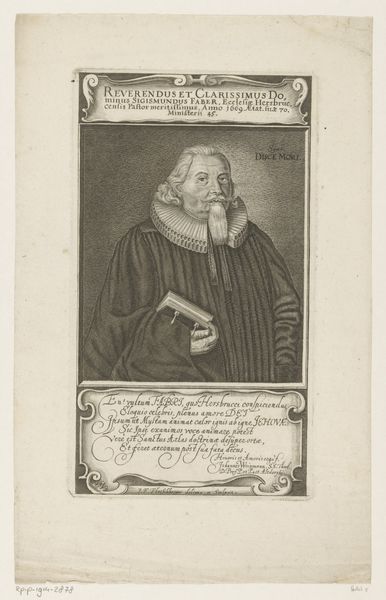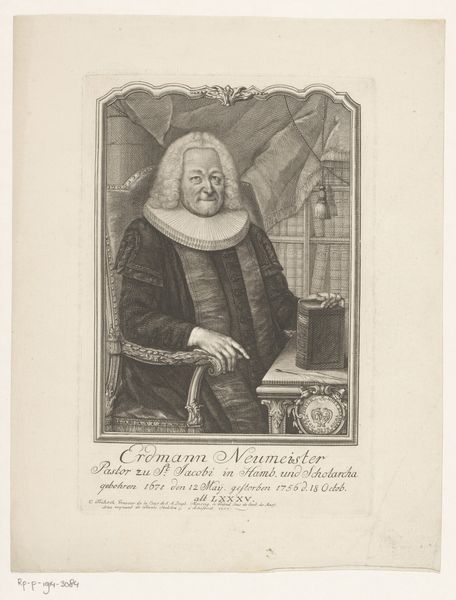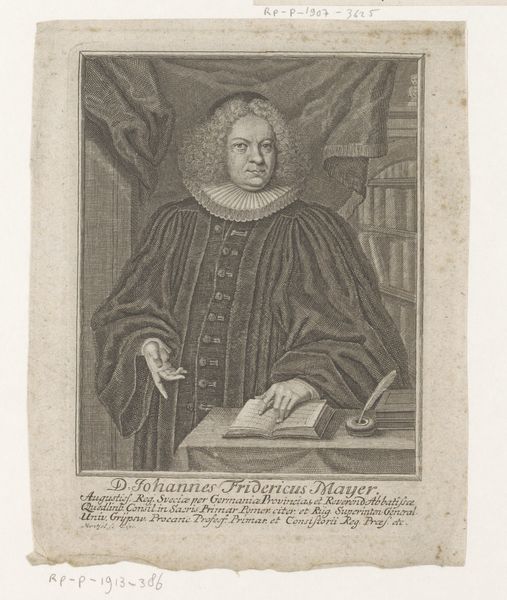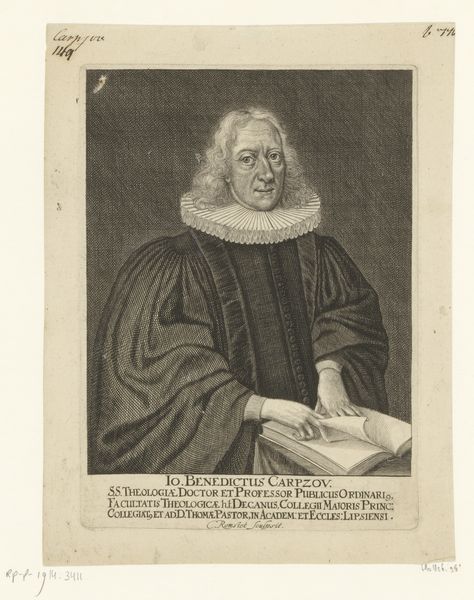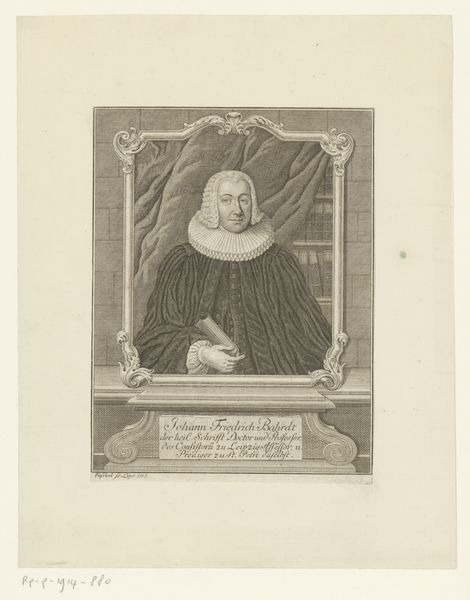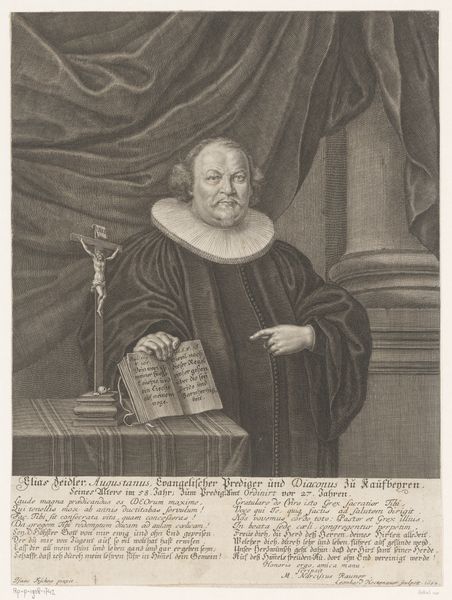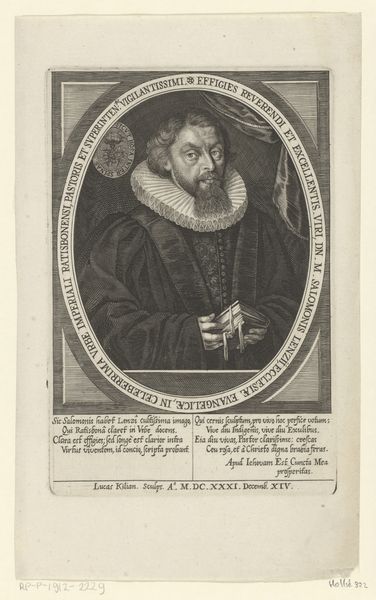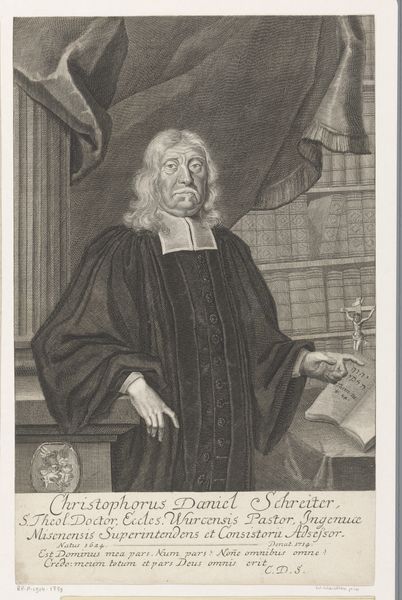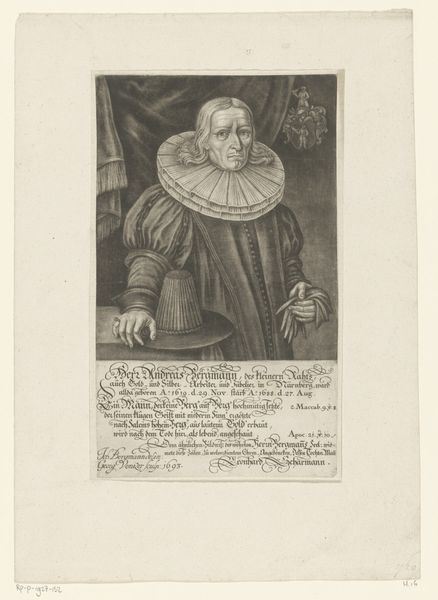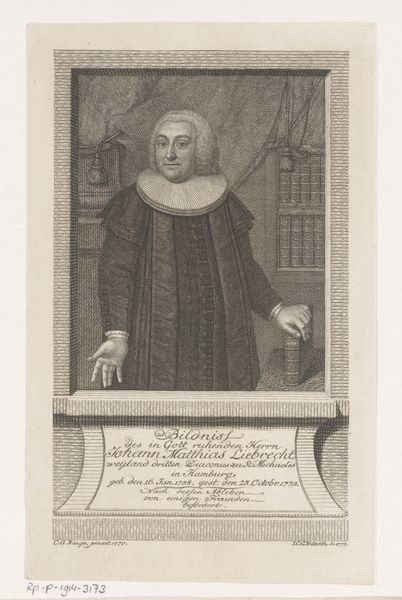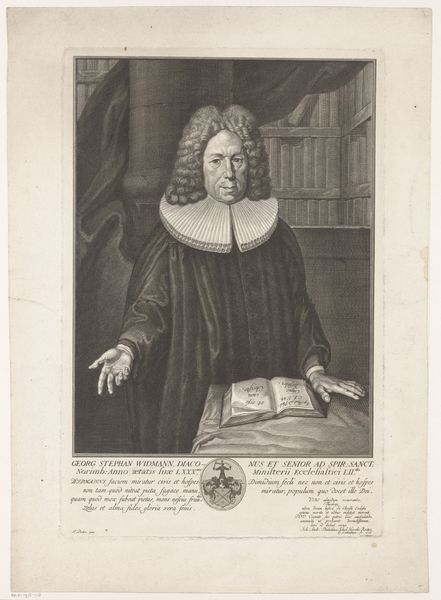
print, pen, engraving
#
pencil drawn
#
light pencil work
#
baroque
# print
#
pencil sketch
#
old engraving style
#
form
#
pencil drawing
#
line
#
pen
#
history-painting
#
engraving
#
realism
Dimensions: height 288 mm, width 193 mm
Copyright: Rijks Museum: Open Domain
Editor: Here we have "Portret van Georg Christoph Müller," made between 1674 and 1722. It's a print, housed at the Rijksmuseum, depicting a formal gentleman with a rather intense gaze. He has an open book in front of him, as well as a crucifix to his right. I find the historical details inscribed below the image particularly compelling. What can you tell us about how societal roles and institutions may have influenced this piece? Curator: The portrait's inscription tells us Mülller's age and the year of his ministry, firmly placing him within a very specific historical and social framework. It functioned to solidify Müller’s public identity. Consider how portraits like these, especially engravings, circulated in society. It's about the construction and dissemination of a particular kind of authority, specifically religious authority, isn't it? Editor: So the engraving allowed the distribution of this image across the religious community, acting almost like a…visual endorsement? Curator: Precisely. The Rijksmuseum's keeping of this artwork signifies how important art is within broader social and political spheres. It represents the Dutch's national identity and historical memory, so it goes beyond individual recognition. Who got to decide what image got preserved? The choices themselves say much about social preferences. Does knowing all this affect your view of Mülller himself? Editor: It definitely adds a new layer! Initially, I saw him as an individual, but now I recognize how his portrayal engages with institutions of power, impacting how he's perceived within that society. Thank you! Curator: And recognizing this historical and social embedding makes us think more actively about the artwork, not only within its moment but inside our present.
Comments
No comments
Be the first to comment and join the conversation on the ultimate creative platform.
